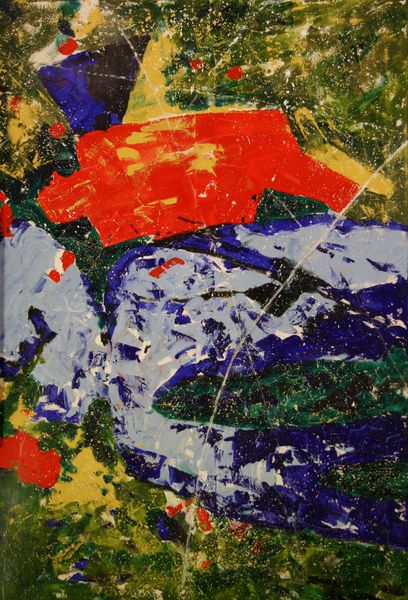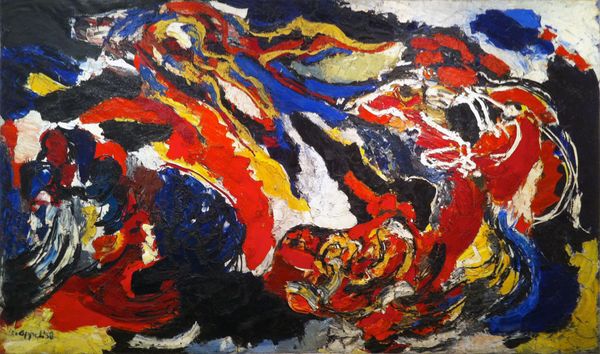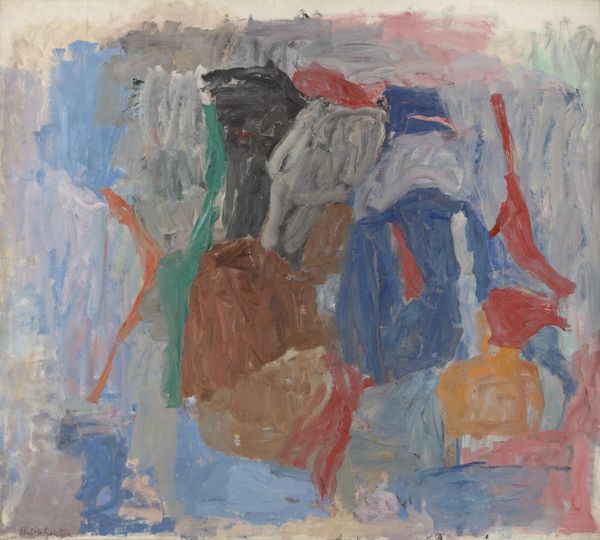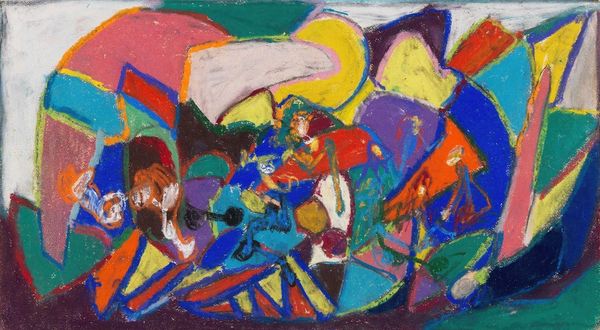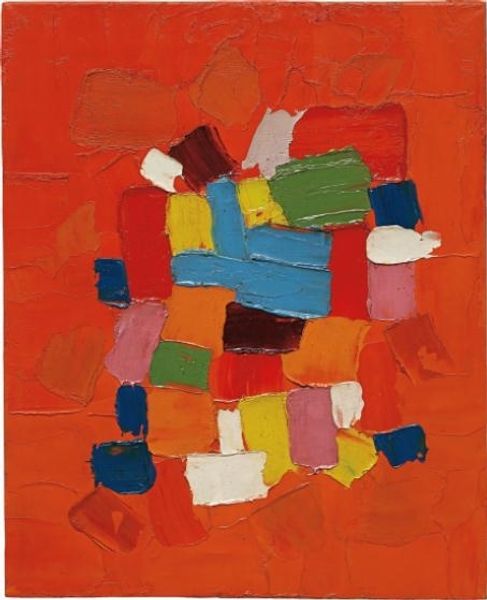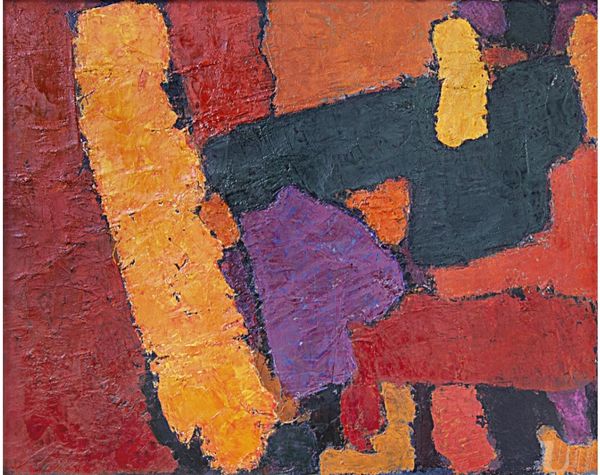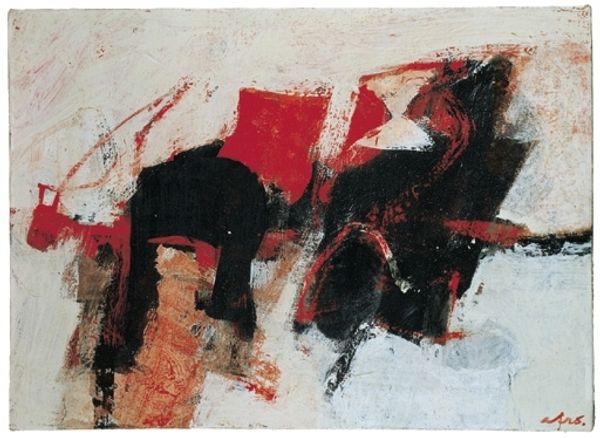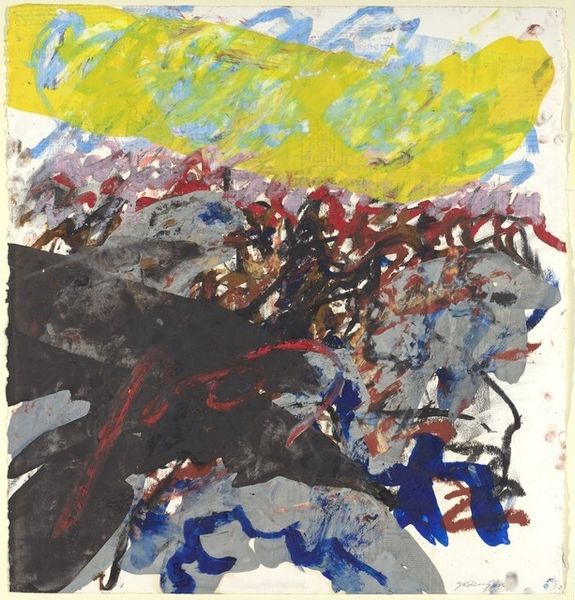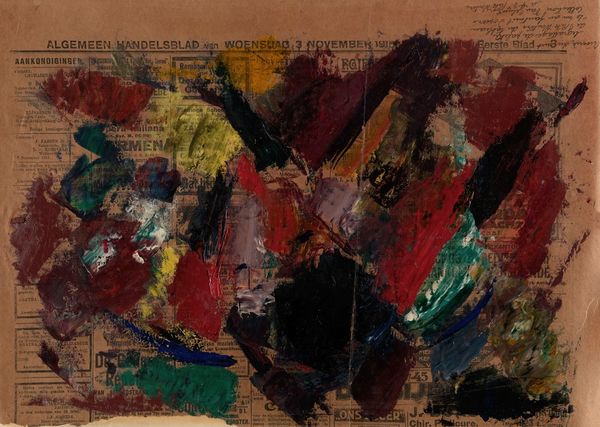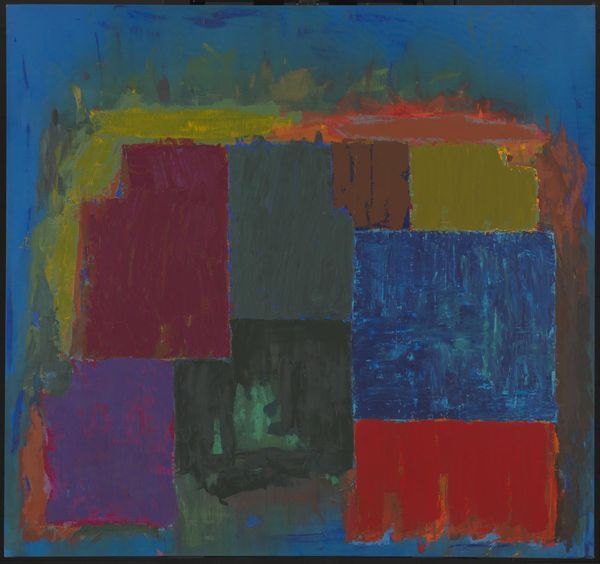
painting, acrylic-paint, impasto
#
abstract-expressionism
#
abstract painting
#
non-objective-art
#
painting
#
acrylic-paint
#
mural art
#
impasto
#
matter-painting
#
abstraction
#
painting art
Copyright: Vilen Barsky,Fair Use
Editor: So, this is Vilen Barsky's "Abstract Composition" from 1958, made with acrylic paint. It's pretty small, but the impasto gives it a surprising weight. It looks kind of chaotic but somehow balanced. What do you see in this piece? Curator: I see a microcosm of cultural memory playing out in these bold strokes. The colors, almost clashing, evoke a sense of conflicting ideologies of the mid-20th century. The blue, red, and yellow—almost primal in their directness. Editor: Primal, that’s an interesting word for it! Like the basic building blocks of something? Curator: Precisely. Consider how often these three colors appear in national flags, in early childhood education, in advertising… Each color carries a significant weight of meaning, conditioned by cultural repetition. Editor: So, you’re saying it's not *just* about the aesthetic experience, but about how those colors resonate with broader social narratives? Curator: Exactly! Even the apparent lack of intentional form can be interpreted as a reaction against the established conventions, a symbolic breaking down of previous structures to create space for new interpretations. Ask yourself, what are these building blocks constructing or deconstructing? Editor: That makes me think about the Cold War context… Maybe that’s why it feels so… tense. So this abstraction isn't empty, it’s loaded with cultural symbolism? Curator: Absolutely. The beauty of abstraction lies in its potential for multiple readings. Even seemingly random arrangements can trigger powerful emotions and associations buried deep within our shared consciousness. Editor: That gives me a lot to think about, thanks. I’ll never look at an abstract painting the same way again. Curator: Indeed, and I appreciate how your observations bring fresh life to these enduring, but evolving, symbolic languages.
Comments
No comments
Be the first to comment and join the conversation on the ultimate creative platform.

